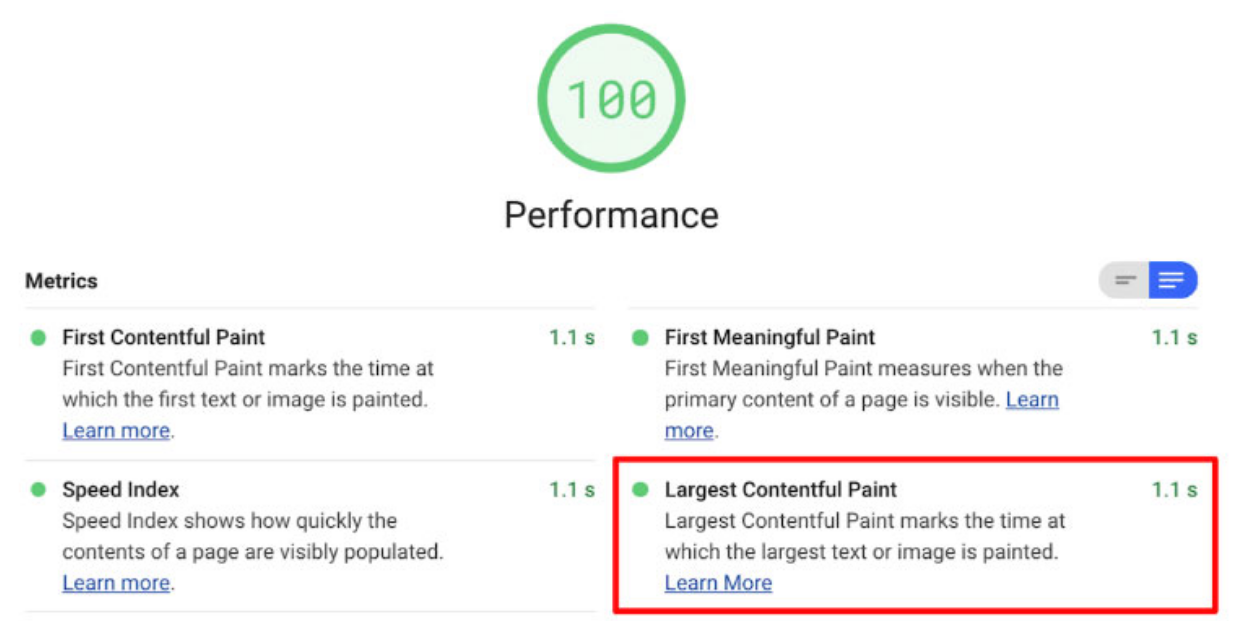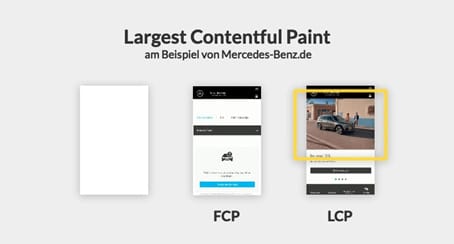Imagine the phone ringing, the oven going off and the washer beeping at the same time the doorbell goes off. How quick can you be in managing everything simultaneously before you open that front door? The faster, the better- right?
Being a core Web Vitals Metric, Largest Contentful Paint (LCP) is a little too complex to understand by someone who isn’t well-versed in technical web terms. This article attempts to smoothen out the wrinkles and tries to make it easier for comprehension.
What is the Largest Contentful Paint (LCP)?
By definition, developers had no means to correlate user experience and page loading speed. The initial utilization of First Paint and First Contentful Paint did not demonstrate the importance of the content. Thus, it emerged with a discrepancy between the developer’s perspective of the user experience and the actual user experience.
Largest Contentful Paint equates better with the two dimensions of page loading- both from the standpoint of the page developer as well as that of the user. In the most simple words, Largest Contentful Paint signifies the speed with which the largest contentful element is loaded on-screen.
What Can Be Included In LCP?
It sounds simple in its application, but the ‘largest,’ as well as the ‘contentful’ parts, vary from individual to individual. Gathering and creating an umbrella metric measure required pin-pointing the standard first.
To generalize, the initial sizes of all elements are taken into account to compare and measure the ‘largest.’ It so happens that while loading, an element gets painted many times in versions of different sizes. LCP only considers the initial painted size of the element.
The ‘contentful’ part looks into the aspects that include ‘content’- which is the text as well as the images. Text nodes and SVG text nodes are grouped in the Element Timing, under text considerations. Image elements, HTML elements with contentful style background images and video elements with poster images are described as a group in the image considerations section of Element Timing.
The definition of first paint is different for both textual and pictorial elements. Images, after they are fully loaded, are considered the first paint. Text at its initial font makes up the first paint textual time.
Why Measure The LCP?
It is a valid thing to wonder why this particular metric is chosen to measure Web Vitals of any website. The short and sweet answer would be because it is the surest way to understand how quickly a webpage responds and presents its content for the viewer.
LCP is easier to optimize as well as to measure than many of its counterparts. It includes the downloadable elements present on the screen and checks how much time is required for them to present themselves.
In real life equivalence, it is similar to quickly opening the door once the doorbell rings. You shouldn’t keep your guests waiting!
What Is A Good LCP Score?
Let us re-visit the previously-mentioned example-
Imagine the phone ringing, the oven going off and the washer beeping at the same time the doorbell goes off. How quick can you be in managing everything simultaneously before you open that front door? The faster, the better- right?
It is near-impossible for all webpage elements to take mere milliseconds to download. The issue is not the absence of time lapsed in presenting the entire webpage, but that of quickness. Hence, a good LCP score extends till 2.5 seconds, after which your webpage needs optimization. If you manage to view all the landing page elements within the first 2.5 seconds, your website is satisfactorily optimized.
Advantages of LCP
You can choose to ignore LCP for whatever purpose, but optimizing your website according to an ideal LCP score gives your website a fighting chance to achieve more conversions. A few advantages of LCP can be listed as follows-
- It is used to measure the speed of loading useful content on the page.
- It includes and emphasizes the visual aspect of the content that loads. It rejects the elements that might be trivial and out of the viewport of the user while calculating the efficiency and speed.
- LCP makes use of simpler heuristics, which can be translated into a useful score, helping developers in its implementation.
Optimizing LCP

Similarly, optimizing the LCP score means installing Web-Host-Compatible (WordPress, Magento, etc.) plug-ins to increase your server speed. Additionally, the optimization of images and text elements, code-blocking and improving cached content will also improve your LCP score.
Tools For Optimizing LCP Score
- Lab Tools
LCP lab-tools can be tested before going live on the website and actively testing on the field. Google’s recommendations include WebPageTest.org, Lighthouse and ChromeDevTools as efficient LCP lab tools.
- Field Tools
Field Tools for testing LCP score are ones that can only be tested upon going live on the website and testing actively while the users see it’s live version. The recommended field tools for a good LCP score are Chrome User Experience Report, Page SpeedInsights and Search Console (Chrome Web Vitals Report).
Final Thoughts
Now that it is on its way to becoming a vital user experience measure in the coming years, LCP optimization needs to be practiced by web developers around the world. You don’t want to be caught in a difficult situation because the proper optimization for it takes time and patience.
Largest Contentful Paint is mainly progressive to the point that it works efficiently in most scenarios. Begin now to answer that doorbell right away!


